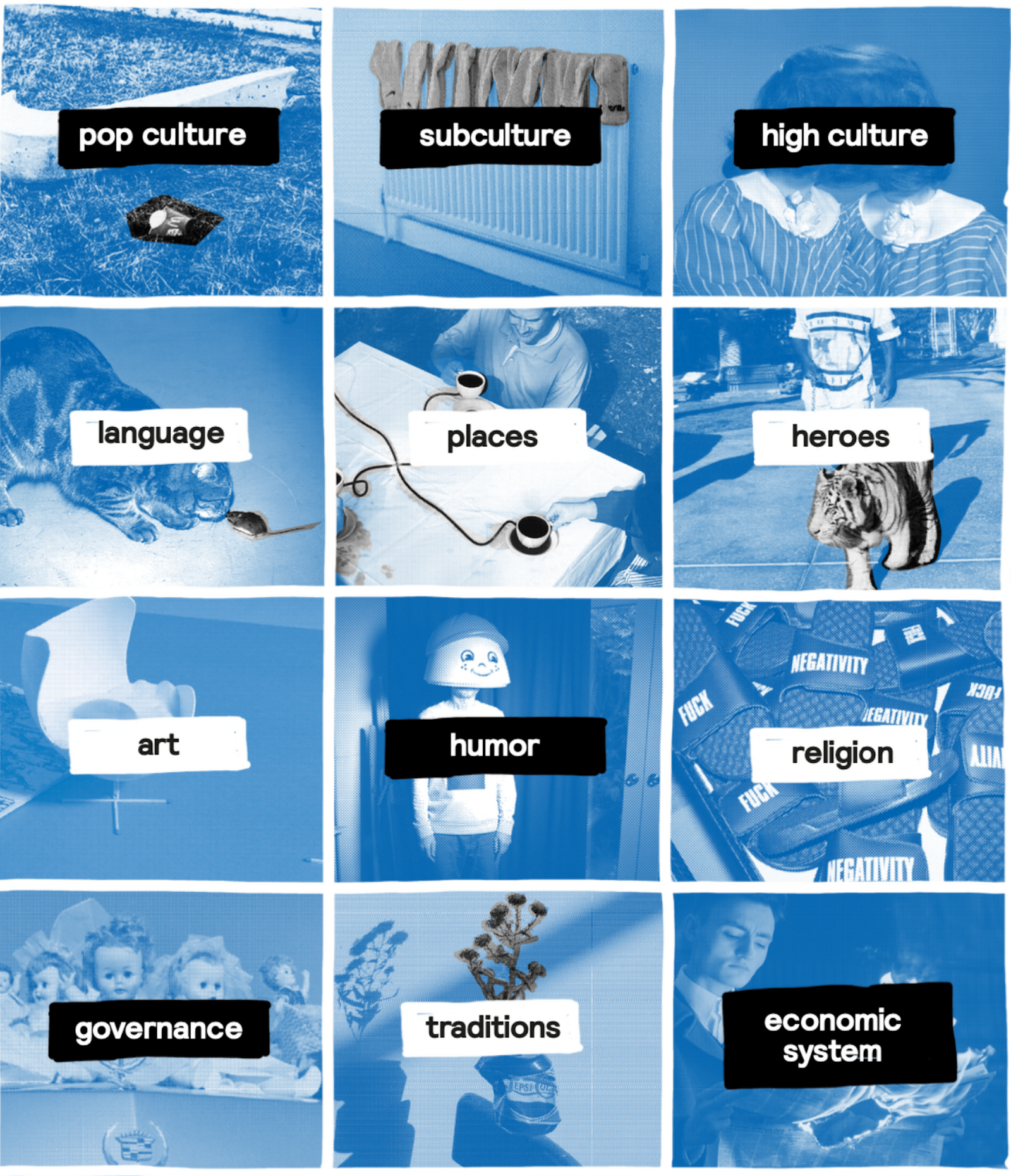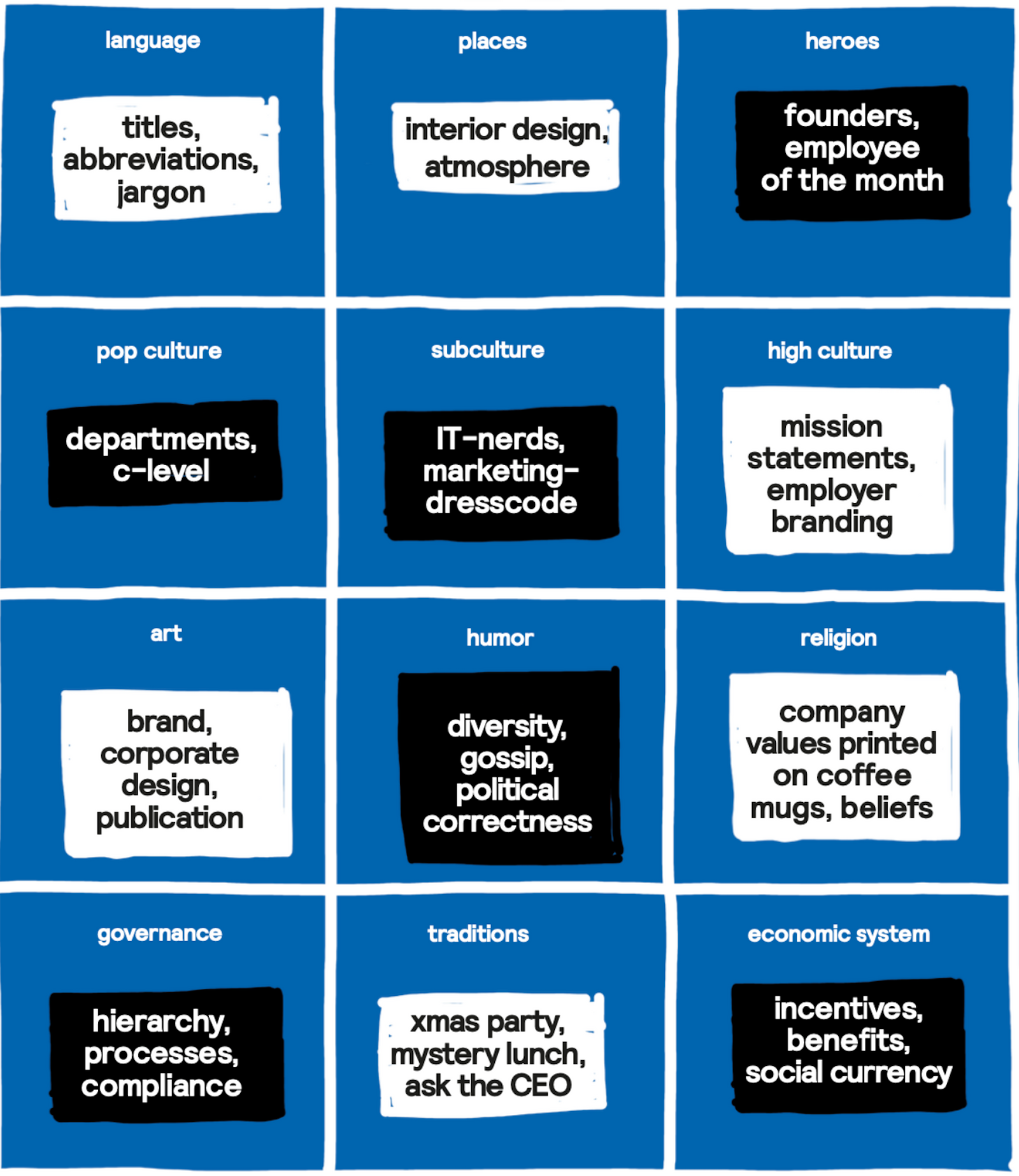Culture Club — A group experience to explore your team culture
In times of a shortage of qualified professionals, companies are fighting for the best talents. But what does a modern attractive employer look like? What does this mean for the brand and communication? How can a company portrait it’s unique culture in a tangiable way?
Theatre of innovation
In the digital age, the ability to change is more important than following a plan. Introducing new collaboration technology and agile methods is not enough to withstand the pressure to innovate and to keep up with the speed of change. The right mindset becomes a success factor. It seems that the third phase of the digital transformation is about cultural change.
Every fighter’s got a plan until they get hit.
In the battle for talent, companies lose credibility with young professionals because the corporate culture they live by does not match their external image. Only authenticity creates identification and loyalty.
What is more, in the age of recommendations many customers now question the business practices of manufacturers and think carefully about who they buy from. A company’s image has direct influence on its economic success.
The idea behind culture club
In the last years, job rating platforms have spread rapidly. And employees eagerly rate and share their experiences at different companies. Through these rating platforms and social media, internal details of the corporate culture leak out and influence the perception of the brand and – in consequence – the image of the company.
What interests prospect employess most are not slick employer branding image films but a genuinely authentic look at a company’s culture. As the culture is publicly documented and discussed, companies are no longer a black box for outsiders. We are moving from black box to glass box. Inevitably, company culture is becoming an important part of a company’s brand.
But how can a lived culture be portrayed authentically? And how could exploring one’s own culture become a co-creative and fun group activity? Culture Club is a concept for a participative team intervention to discover, reflect and communicate one’s own culture.
What is Culture anyway?
Culture can mean everything and nothing. Kroeber and Kluckhohn (1952), after reviewing more than 100 definitions of culture, arrive at the following synthetic definition in their paper »Culture: A critical review of concepts and Definition«:
Culture consists of explicit and implicit patterns of acquired behaviour, transmitted through symbols, which account for the different achievements of different human groups, including their embodiment in artefacts; the essential core of culture consists of traditional (i.e. historically derived and selected) ideas and, in particular, the values attached to them; cultural systems can be seen on the one hand as products of actions and on the other hand as constitutive elements of future actions.
Or in the words of famos anthropologist E.B. Tylor, culture is
that complex whole which includes knowledge, belief, art, morals, law, custom and any other capabilities and habits acquired by man as a member of society.
So which of these components, capabilities and habbits also existence in corporate culture? And what are their manifestations in an organization? Quite a lot when – you come to think of it. Here is a comparison of different elements of culture and what they translate to in organizations.
Exploring culture as a group
Making culture tangiable is the firt step. Great, if you want to communicate what your organization feels like to the external world or new hires. But more often than not, exploring your culture brings up some issues which you want to transform into a more preferable state than the staus quo. Problem is: you don’t change culture through stickers, emails & memos. You change it through relationships … one conversation at a time. That’s why we designed group activities, games, role plays for each of the culture elements (language, places, hereos, humor etc.) that offer a playful reflection of team culture while co-creating interesting cultural artefacts that serve as portrait of the lived culture for communication. The group activity itself is designed as an intervention in which a joint experience sets the foundation for living into a more preferable culture.
Special thanks to the design team of door2door GmbH for their support and willingness to be our pilot partner for testing the culture club concept and artefacts.





